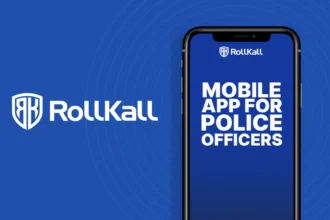Buying a business is a dream for many aspiring entrepreneurs, but the common barrier is often the lack of upfront capital. Fortunately, buying a business with little or no money is not an impossible task. With the right approach and strategies, you can successfully acquire a business without needing to invest significant personal funds.
In this article, we’ll explore proven strategies to help you understand how to buy a business with no money in 2024. From seller financing to leveraged buyouts and partnering with investors, we’ll dive into practical methods that have helped countless entrepreneurs achieve their dreams.
Understanding the Concept of Buying a Business with No Money
At first glance, the idea of buying a business without any money may seem too good to be true. However, by utilizing creative financing methods and negotiation tactics, it’s possible to become a business owner without putting down significant capital.
How is this possible? Several methods allow buyers to leverage the value of the business itself, its assets, or even external funding sources to finance the acquisition. The key is understanding these strategies and choosing the right one based on the type of business you want to acquire.
Leveraging Seller Financing
One of the most popular ways to buy a business with no money down is through seller financing. In this scenario, the seller agrees to finance part or all of the sale, allowing the buyer to make payments over time instead of an upfront lump sum.
How it works:
- The buyer negotiates with the seller to pay a portion of the sale price over a specified period.
- The business itself serves as collateral, reducing the risk for the buyer.
Advantages:
- No need for large upfront capital.
- The seller is often motivated to ensure the success of the business after the sale, as they are still financially tied to it.
Considerations:
- You may need to pay higher interest rates than with traditional financing.
- It’s crucial to establish a solid relationship with the seller to ensure a smooth transition.
Exploring Leveraged Buyouts (LBOs)
Another strategy is executing a leveraged buyout (LBO). This involves acquiring a business by borrowing a significant amount of money, using the assets and future cash flows of the business as collateral for the loan.
Step-by-step approach to an LBO:
- Identify a business with valuable assets or consistent cash flow.
- Secure financing through banks, private equity, or other lenders.
- Use the acquired loan to purchase the business, then pay off the debt using the business’s profits.
Benefits:
- Allows you to purchase a larger or more profitable business than you otherwise could afford.
Risks:
- LBOs carry risk because if the business underperforms, paying off the loan can become challenging.
- You may also lose control if the business fails to meet financial projections.
Partnering with Investors
If you’re unable to fund the purchase of a business yourself, consider partnering with investors. Investors can provide the necessary capital in exchange for a stake in the business or future returns.
How to find and approach investors:
- Research local angel investor groups or private equity firms.
- Prepare a compelling business plan and demonstrate the potential for profit.
Structuring the deal:
- Decide whether investors will have equity, debt, or profit-sharing.
- Ensure the agreement allows you to maintain some level of control over the business.
Tip: Ensure that the investors align with your long-term vision for the business and are willing to contribute more than just capital.
Using Earnouts to Your Advantage
An earnout is another creative way to buy a business with no money upfront. In an earnout agreement, you agree to pay the seller based on the future performance of the business.
How it works:
- A portion of the sale price is deferred and paid only if the business meets certain financial targets.
Pros:
- Reduces the need for immediate capital.
- Allows you to minimize risk if the business underperforms.
Cons:
- Earnouts can complicate negotiations, and disagreements may arise over business performance targets.
Exploring Business Grants and Loans
Governments and financial institutions often provide business grants and loans to entrepreneurs, especially those in underserved communities or industries. While these require research and application, they can provide the funding you need without risking personal assets.
Types of funding available:
- Government grants: Typically offered to businesses that promote economic development or innovation.
- Small business loans: Programs like the SBA loan in the U.S. offer favorable terms to small businesses.
Alternative funding options:
- Crowdfunding platforms: Sites like Kickstarter allow you to raise money from individual backers.
- Angel investors: Individuals who provide capital in exchange for equity.
Key application tips:
- Ensure you meet the eligibility requirements.
- Have a solid business plan and projections to demonstrate the viability of the business.
Acquiring a Distressed Business
Another cost-effective way to buy a business is by targeting distressed businesses. These businesses may be struggling financially, allowing you to negotiate favorable terms.
How to identify distressed businesses:
- Look for businesses with declining revenue or operational challenges.
- Search for businesses going through bankruptcy or other financial difficulties.
Negotiating favorable terms:
- Offer to take over the business’s debts in exchange for a lower purchase price.
- Negotiate payment terms that allow you to stabilize the business before making payments.
Risks and rewards:
- Risk: Reviving a distressed business requires time, effort, and additional investment.
- Reward: If successful, you can acquire a valuable asset at a fraction of its worth.
Franchising as a Low-Cost Option
If you’re looking for a business with an established brand and support system, franchising can be an attractive option. Some franchises offer low-cost entry options or even financing for new franchisees.
How franchising works:
- You pay an initial franchise fee and ongoing royalties in exchange for the right to use the brand name and business model.
Finding low-cost franchises:
- Look for franchises that have lower upfront fees or offer financing assistance.
Benefits:
- Established business model with support and training.
- Can require less upfront investment compared to starting a business from scratch.
Conclusion
Buying a business with no money is entirely achievable if you leverage the right strategies. Whether you opt for seller financing, partner with investors, or explore leveraged buyouts, there are numerous ways to get started on the path to business ownership without significant personal capital.
Remember to evaluate each option carefully to ensure it aligns with your business goals. Don’t hesitate to take that first step – the business of your dreams could be within reach!
For more financial advice and tips, visit My Finance Guider.





